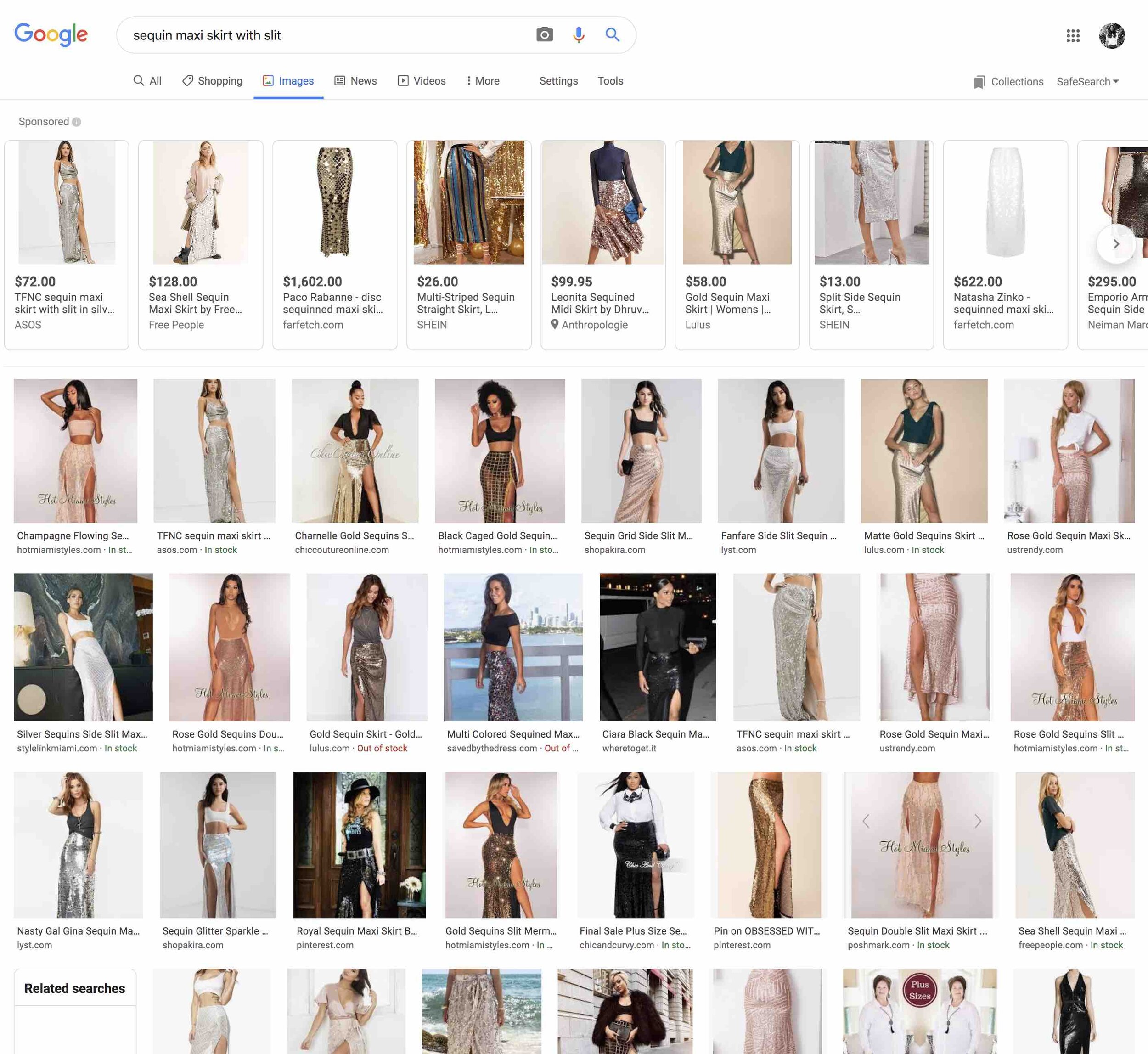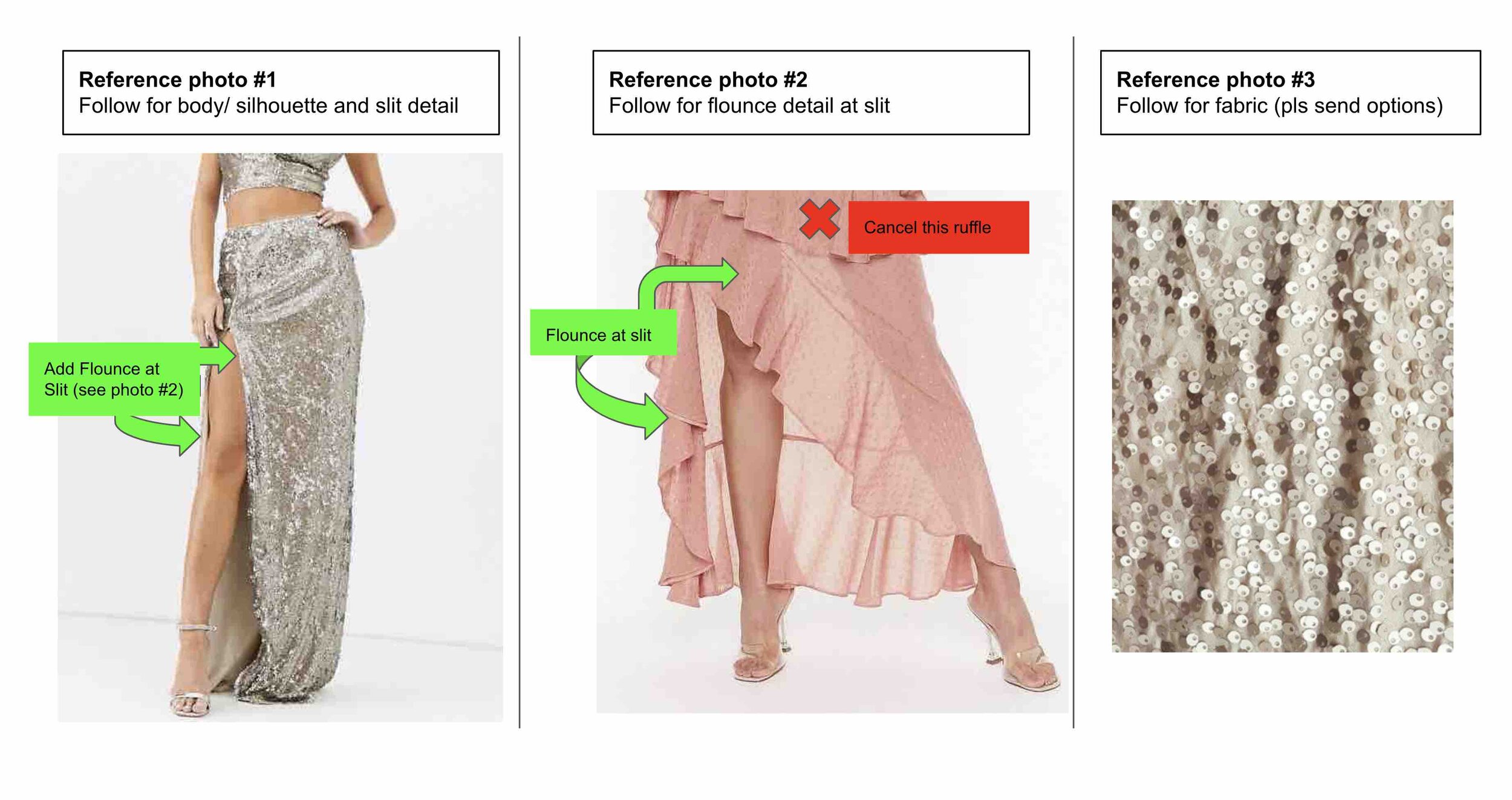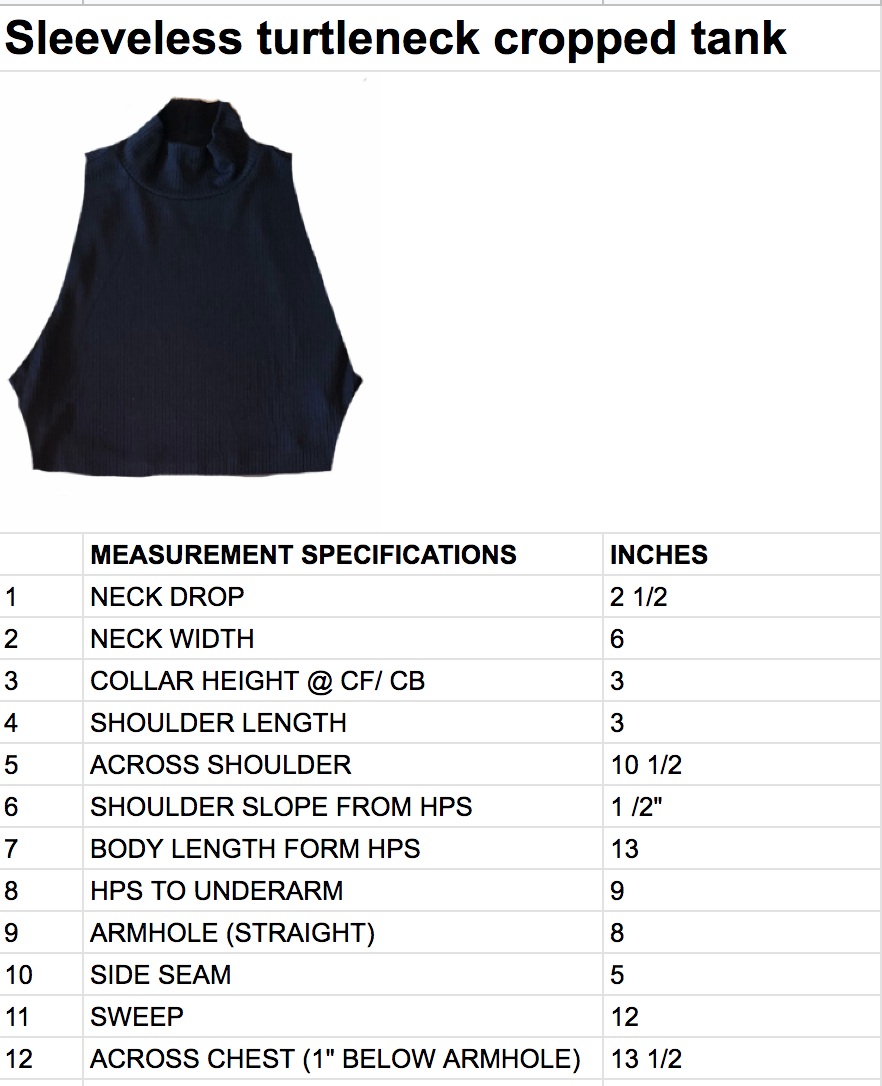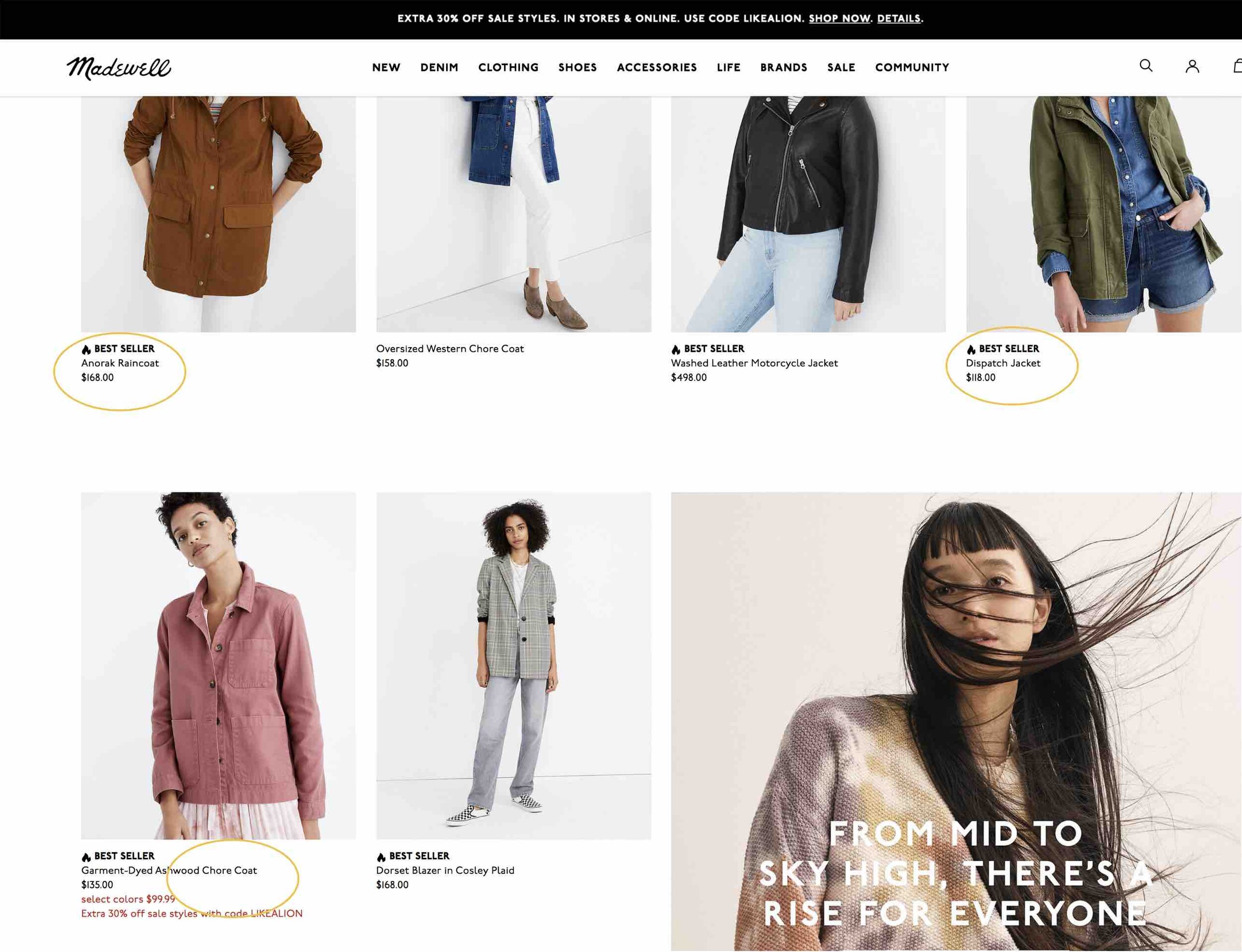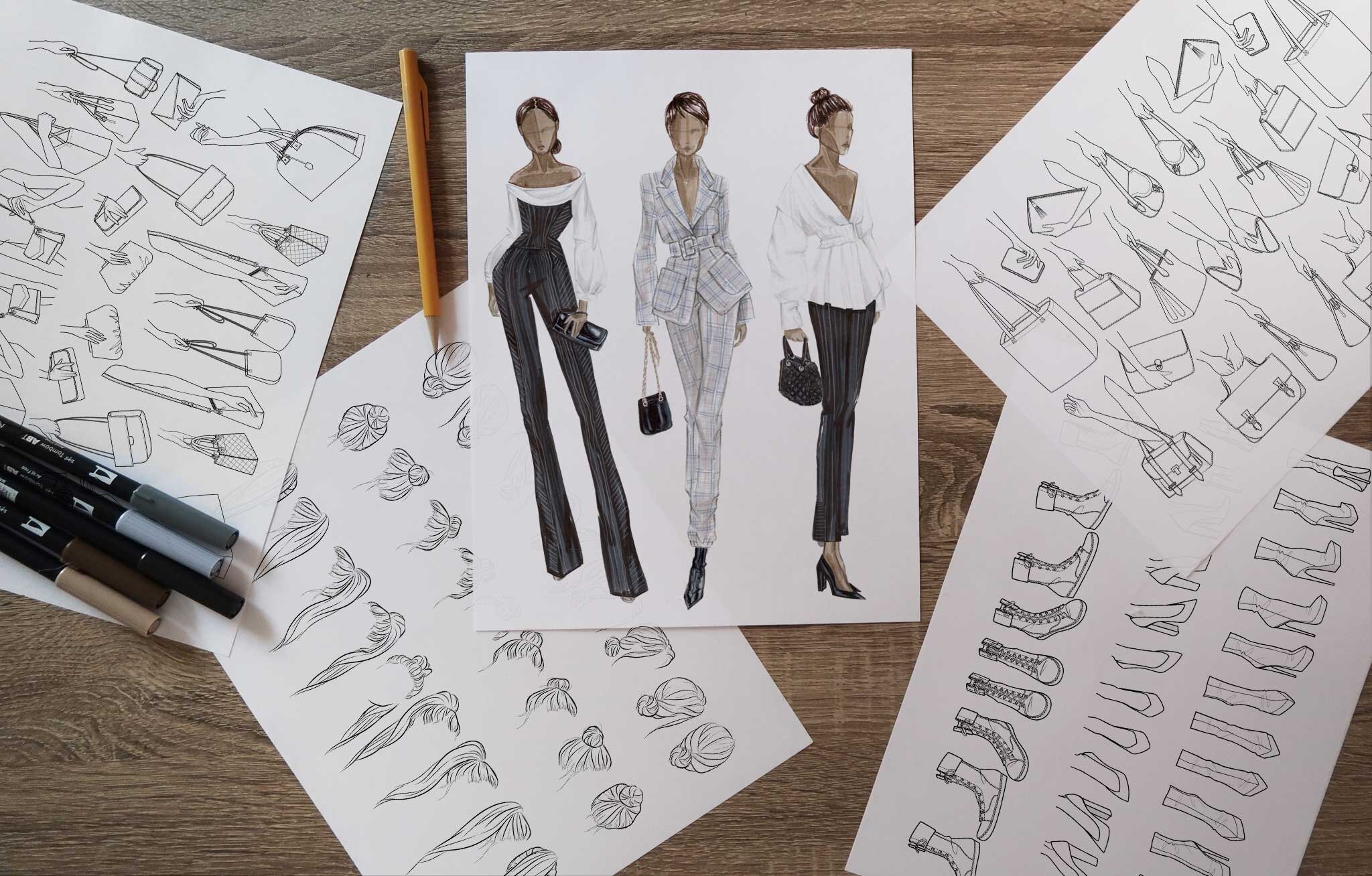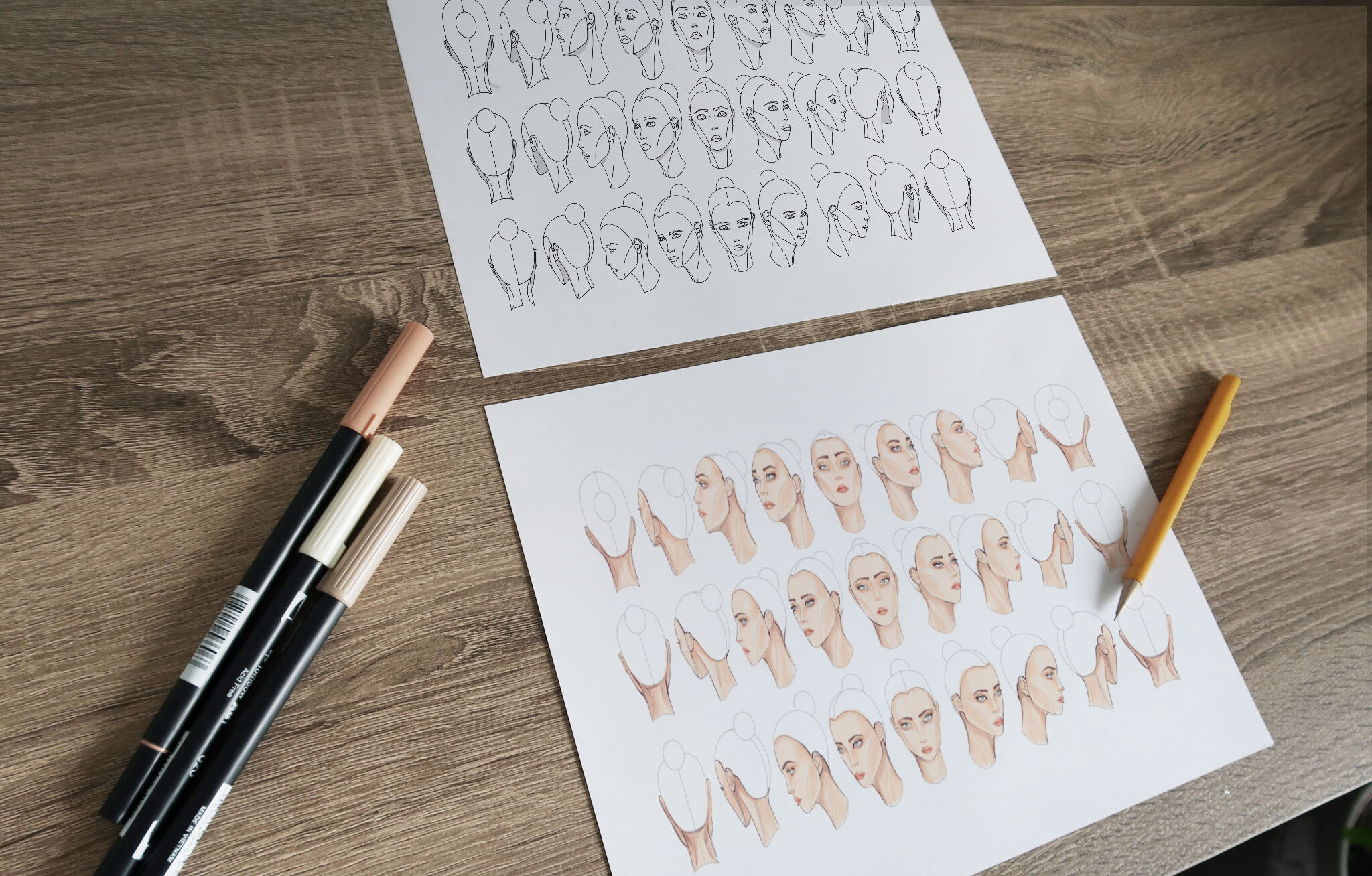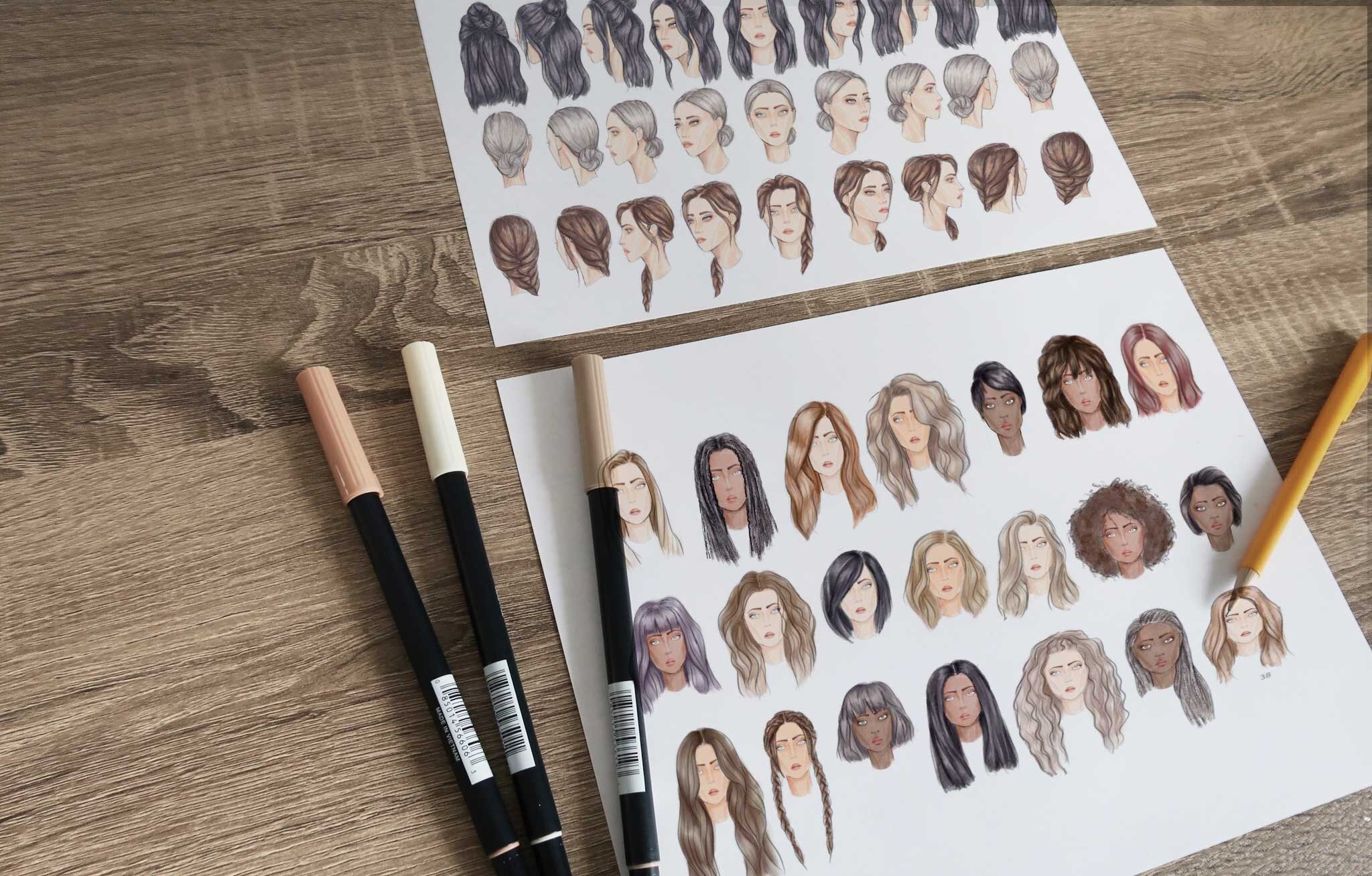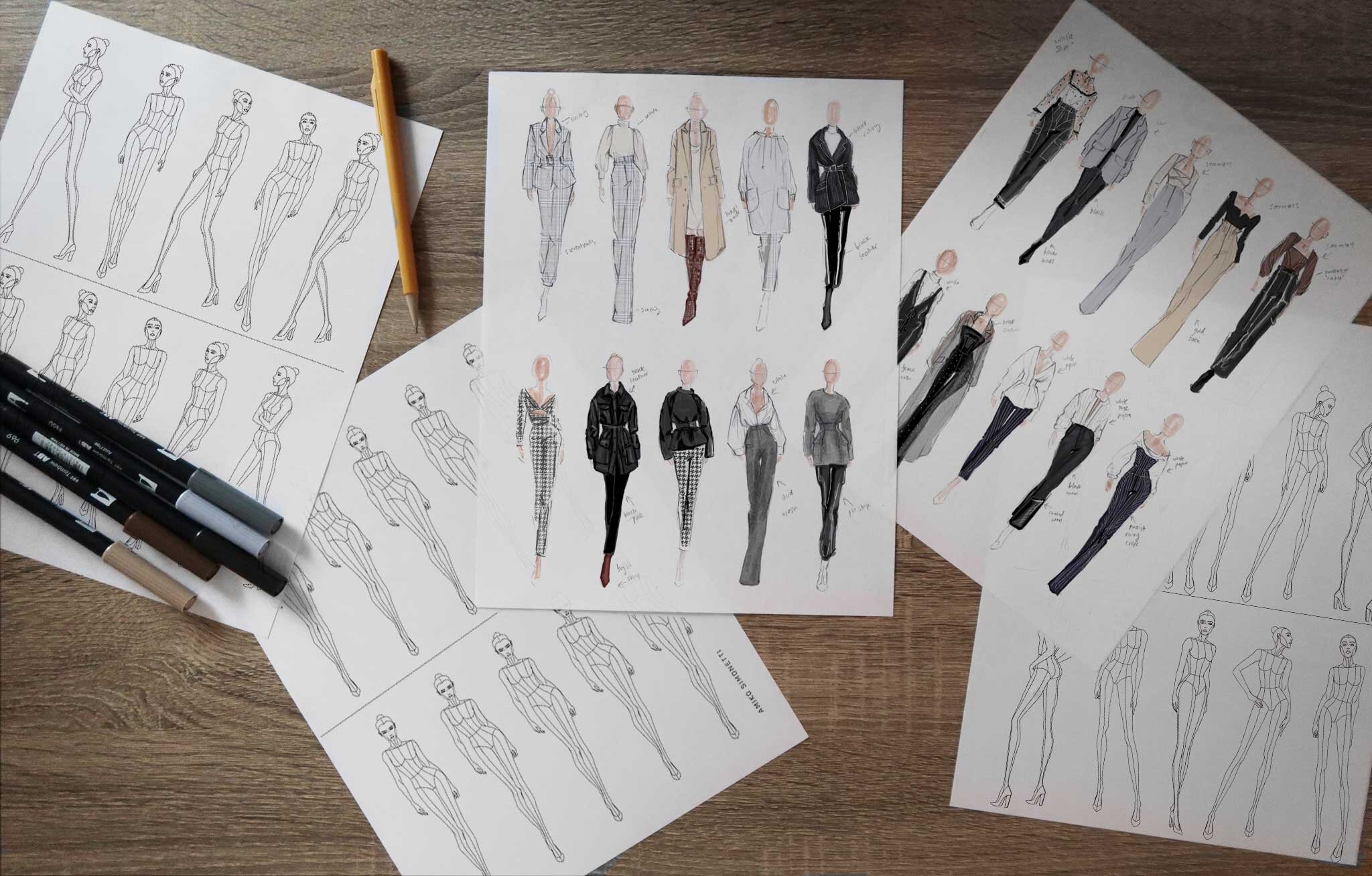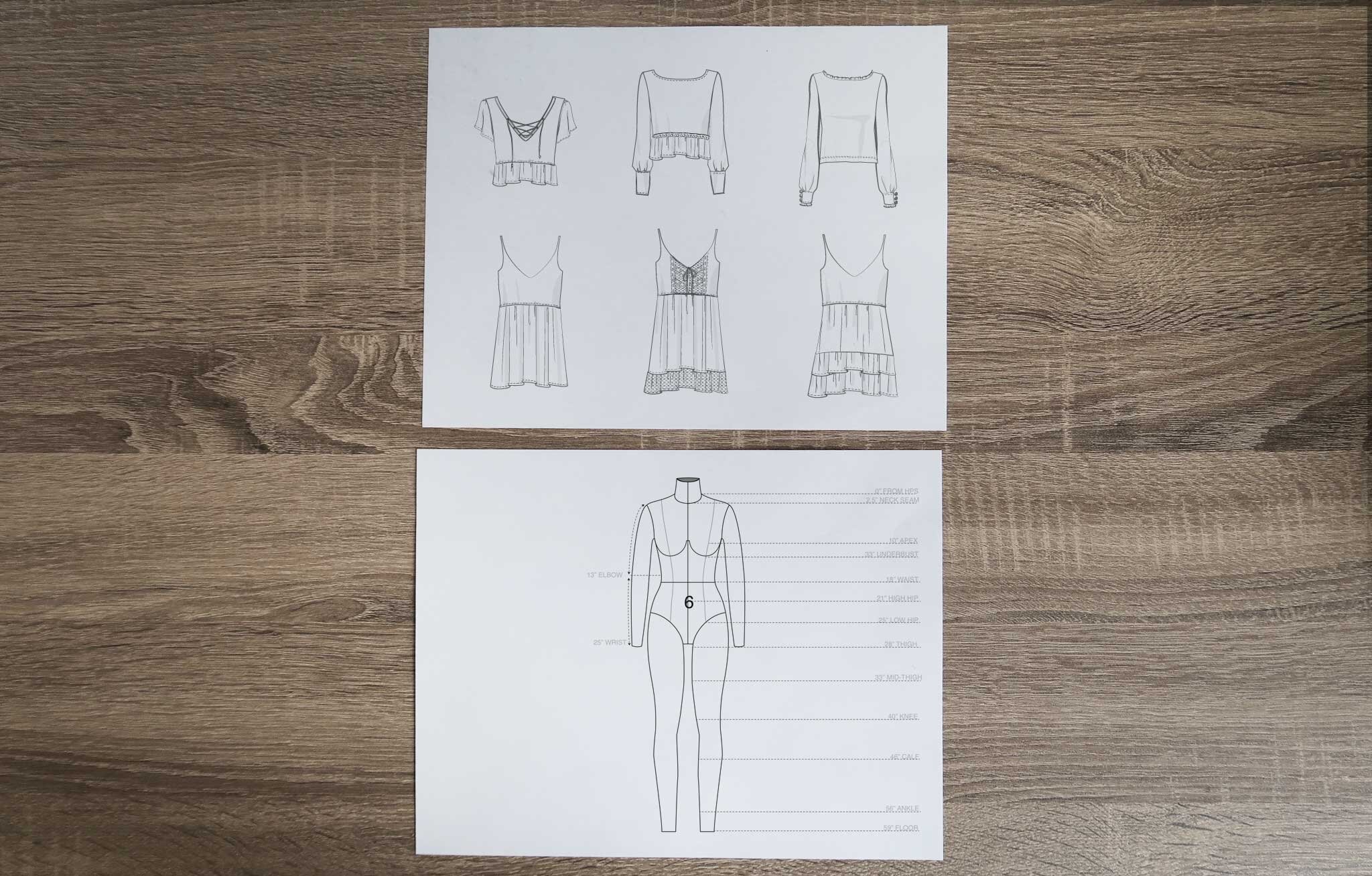How to Design Clothes (Without Drawing)
This post outlines methods to communicate a design vision, without drawing.
Reference photos
The first tool is reference photos. With Google, it's so easy to search for design ideas.
Let's say I wanted to design a sequin maxi skirt with a flounce. I'm picturing a sexy floor-length skirt with a slit and a cascading flounce. Now, I need to find images to visually describe this idea.
• • •
First, I search in google images "sequin maxi skirt with slit”
I look through the photos and decide that this style is closest to what I had in mind.
This photo is now my starting point, but now I need to find other supporting images to communicate my idea further.
I google image "maxi skirt with flounce" to try and find the perfect ruffle placement and size. I like the look of the flounce at the hem, but the top flounce is a bit too busy for me. I crop the photo to show just the ruffle I want.
I can even draw on top of the image in Google Slides (it’s a free app) to express my design vision.
These two images now express what I'm generally going for.
(note: for consistency, I reflected the sequin skirt so the slit was on the same side in each photo.)
Lastly, I want to communicate the fabric. I'm not sure if I want small sequins or gigantic sequins like paillettes, but I know I want the color to be champagne. I google image "champagne sequin fabric" and "champagne sequin paillette fabric.” I decide that large paillettes might not drape well on the ruffle cascade, so I go with small sequin fabric.
This is the final result of my photo collage.
Tip: Label each reference photo and explain it’s purpose
• • •
You can also curate images of trim, fabric, color, silhouette, and other images to support your design idea.
You can create photo collages in Photoshop, InDesign, Powerpoint, or in a free program like Google Slides.
I prefer to work in Google Slides (it's like Microsoft Powerpoint, but web-based.)
Reference Samples
The next best thing to reference photos is reference samples.
At its core, fashion design is a bunch of measurements.
For example, these shirts are different because of their unique measurements of the neck width, neck drop, armhole opening, sleeve length, etc.
Specification on measurements (or "specs" for short) are the foundation of every design.
In college, we took an entire class on measuring garments using this book—the Spec Manual. This book is fantastic because it shows how to measure every type of garment. Here’s an article on How to Spec a Garment.
This book includes sample "spec sheets" with various "points of measure" (POS for short) in a garment. Here is an example spec page from the book:
You can practice measuring specs on garments in your own, or a friend or family member's closet.
• • •
Let's say I want to develop a cropped, turtle-neck, cropped tank in a ribbed knit fabrication.
I look in my closet to find anything somewhat similar.
I find a long sleeve ribbed bodysuit. It's not precisely my design idea, but it's a good starting point because it's:
1) a rib-knit 2) tight to the body3) a turtle-neck.
I place the garment flat on a table, smoothing out the wrinkles. Then I place a ruler to indicate the hem of the cropped tank. I take measurements of the garment, adjusting as necessary (ignoring the sleeves and reduce the across shoulder measurement by 2", adding an inch to the turtle-neck measurement, etc.)
This is the final spec sheet that I created in Google Sheets.
The title of the spec sheet helps to illustrate the design idea. I included “sleeveless” and “tank” to double confirm that the garment doesn’t have sleeves.
To further illustrate the design idea, I erased the sleeves in Photoshop (you could do this in paint.)
• • •
Descriptions
Here's where there is a little bit of a learning curve. If you are new to fashion, you may not know the terms for different types of garments, necklines, silhouettes, etc.
Each garment category has many terms to describe fits and details.
To be honest, I'm still learning names for things.
I'm like, wait, what's a "Culotte" again?
The cool thing is, it's free and easy to learn different fashion terms. Even when you're online shopping, just look at the product description.
A lot of times, the product descriptions on websites come from the actual designer's description.
By scrolling through products at online stores, we can learn new words by just paying attention.
Just this one page on Madewell’s website shows three different types of jacket: dispatch jacket, anorak, and chore coat.
By describing your design idea, other people can visualize it (especially if you're talking to people in the industry.)
For example: here's a series of descriptive words to express your vision: "a ribbed-knit henley t-shirt that's cropped and has a super dropped armhole."
In this example, I gave clarifying information for fabric, (ribbed-knit) neckline detail (henley), garment category (t-shirt), length (cropped), and other supporting specs (super-dropped armhole.) I called out key elements of the design using descriptors.
Here are more examples of how to define your design:
Product category (t-shirt, jacket, woven top, etc.)
Fabric (chiffon, sequin, spandex, etc.)
Neckline (scoop, v, crew, boat, surplice, etc.)
Type of armhole (dropped, raglan, dolman, set-in, etc.)
Kind of sleeve (bishop, kimono, flutter, cap, bracelet, etc.)
Length (maxi, midi, mini, cropped, etc.)
Silhouette (boxy, body-con, a-line, oversized, etc.)
Finishes + details (Cuffs, collars, pockets, etc.)
To learn more, try google imaging things like "neckline types," "sleeve types," etc.
Templates
You don't have to be great at drawing if you have great templates.
A template, or "croquis," can be a drawing of a fashion model, mannequin, or any figure that you trace over to design clothes. You can use a croquis to draw flat sketches or full-figure illustrations. The idea is that you're using old drawings as the basis for new drawings and saving time and frustration.
You can also google images of flat sketches to guide you. Example: "Motorcycle jacket flat sketch" or "Motorcycle jacket vector sketch." By researching other sketches, you can find pointers on how to improve, or at least see an example of what you're trying to achieve.
Templates help to bridge the gap between your imagination as a designer and your skills as an artist.
Even though I can draw, I still use templates. When it comes to saving time, I don't mess around. I created a kit of over 500 croquis templates that I can trace over and over. I even made interchangeable heads, feet, hands, hairstyles, and accessories, so it's easy to change the model's pose. Click here to learn more.
You can also find fashion templates on websites like Etsy.
Hire a freelancer
Lastly, you can always hire someone to draw your designs.
There are lots of people with great ideas who hire freelance designers to execute them.
The beauty with the emerging "gig economy" is that it's easy to hire qualified designers on sites like Upwork or Fiverr for short or long-term projects.
I freelance on Upwork (from time-to-time) and personally enjoy it.
It's easy to set milestones, stay on top of deadlines, communicate with clients, and exchange money.
You also can view freelancer's design portfolios and read past client reviews to determine if it's a good fit.
In addition, you can pay a flat fee for specific tasks and milestones, which controls the budget (just be aware—edits will often be an hourly fee.)
Conclusion:
I know when you think "fashion design," you see an artist sketching away at a drawing table. But this isn't always the case...
When it comes to designing clothes, reference photos, samples, descriptions, templates, and freelancers are fair game.

